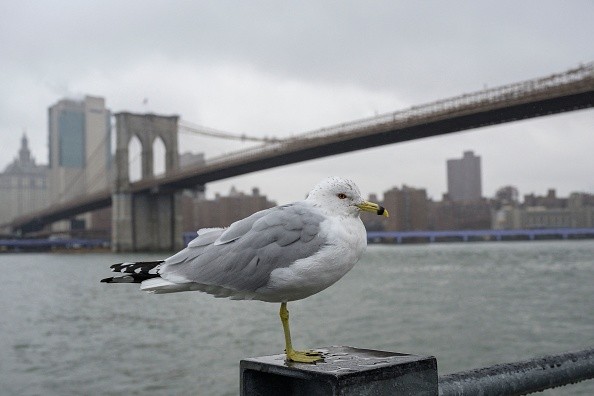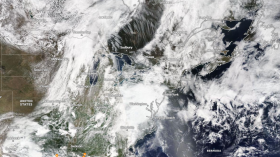Blizzard warnings were issued for the Sierra Nevada mountain range in both California and Nevada.
Parts of the Northeast were under a winter storm warning, including Connecticut, New York, Massachusetts, New Jersey, and Rhode Island.
The Upper Midwest areas were also under siege.
Massive storms roll across the US
 (Photo : ANGELA WEISS/AFP via Getty Images)
(Photo : ANGELA WEISS/AFP via Getty Images)

Much of the Upper Midwest and Northeast have received winter weather advisories and warnings, as per USA Today.
According to the National Weather Service, New York City received the most snow this winter, with 1.8 inches reported.
Parts of Texas, Oklahoma, and Kansas are still recovering from severe weather that struck the region on Sunday and Monday.
There were dozens of injuries and at least one death reported.
Forecasters said another severe weather outbreak was possible in the southern United States on Wednesday and especially Thursday.
Schools in southern New England were closed or delayed as the most significant snowfall of the mild winter fell overnight.
Some communities were blanketed with up to eight inches of snow.
The Massachusetts Bay Transportation Authority announced on Twitter that its Power and Signal Departments are working on a power outage that is affecting the signal system on multiple lines and some stations.
Trains may be requested to wait at stations.
A foot of snow was predicted for east central New York, western and central Massachusetts, as well as southern New Hampshire, southern Vermont, and western Maine.
The majority of flight cancellations and delays occurred in the Northeast.
As of Tuesday afternoon, approximately 500 commercial flights had been canceled, and over 3,000 had been delayed.
Snow and sleet fell across all five boroughs of New York City on Monday night and Tuesday morning.
The city's official snowfall total at Central Park was 1.8 inches, according to the weather service.
This brings the total seasonal snowfall for New York City to 2.2 inches.
Other parts of Manhattan and Brooklyn received no more than 2 inches of snow, making it the city's largest snowfall this winter.
The Bronx received more than five inches of rain.
New York City wakes up to the biggest snowfall
This week, a new coast-to-coast winter storm is expected to pound parts of California, the Midwest, and the United States' northeast, as per the BBC.
The National Weather Service (NWS) predicted up to eight inches (20cm) of snow in parts of the northeast, with New York City receiving two to six inches.
On the other side of the country, heavy snow is expected in mountainous areas of California.
It comes after tornadoes in Oklahoma injured 12 people.
The NWS said in its latest forecast that New York City will be on the southern edge of the heaviest snowfall and that it may mix with sleet at times, limiting snowfall amounts to the two- to six-inch range but still likely the biggest snowstorm of the season.
Snow started falling Monday evening and is expected to turn to sleet and rain by Tuesday morning.
From 18:00 (23:00 GMT) on Monday to 14:00 on Tuesday, a travel advisory was issued for New Yorkers, urging them to use mass transit whenever possible and to allow extra time for their commutes.
The late-February storm is the heaviest of the season in New York City.
So far, the winter in New York and much of the northeast has been unusually mild.
Several school districts in the city have announced that they will be closed on Tuesday due to inclement weather.
Winter storm warnings are in effect for the entire state of Connecticut and Rhode Island.
The heavy snow across the north-east is expected to end on Wednesday, according to the NWS.
This winter storm follows tornadoes and strong winds that hit the central United States on Sunday and Monday, causing residents in states, such as Oklahoma, Missouri, and Texas to seek shelter.
Related article: US Weather Forecast: Special Weather Warnings Have Been Issued for the Maritimes Ahead of a Risk of Freezing Rain on Friday
© 2024 NatureWorldNews.com All rights reserved. Do not reproduce without permission.




![Venomous Centipede Could be Game-Changer and Save Lives of People with Kidney Disease [Study]](https://1471793142.rsc.cdn77.org/data/thumbs/full/70407/280/157/50/40/venomous-centipede-could-be-game-changer-and-save-lives-of-people-with-kidney-disease-study.jpg)
